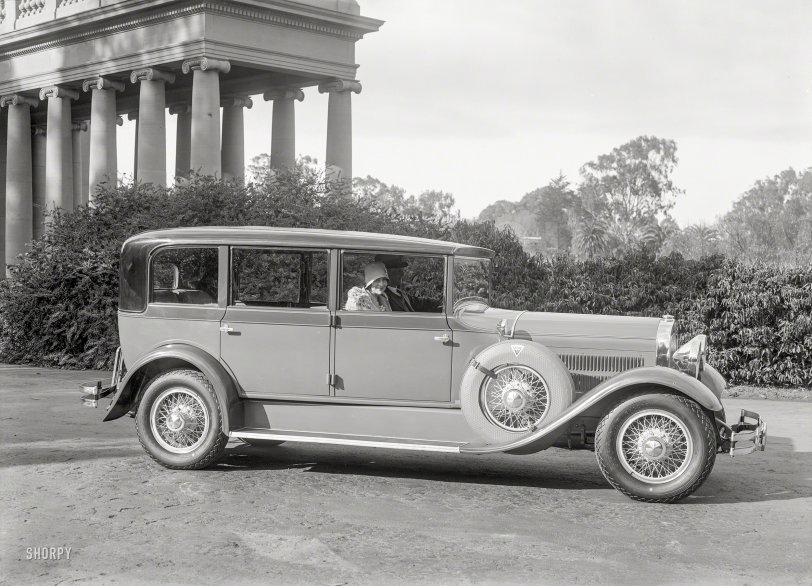


Framed or unframed, desk size to sofa size, printed by us in Arizona and Alabama since 2007. Explore now.
Shorpy is funded by you. Patreon contributors get an ad-free experience.
Learn more.

- Complicated then, forgotten now
- Bryan-Stevenson
- Skinny is as skinny does
- How do you rest in peace
- Riding the footboards
- Alas, hidden from view
- Baldwin Diesels
- Exclusive pump
- Details, Details
- What's that building to the left of the tower?
- Coal Barges
- Bromo-Seltzer
- Inner harbor
- The Basin
- What a headache!
- Giant stepladder?
- Yeah, it was cold
- Love those coats
- Link & Pin Days Remnant
- Baldwin 62303
- Baldwin VO-1000
- Cold
- No expense spared
- Tough Guys
- Lost in Toyland
- And without gloves
- If I were a blindfolded time traveler
- Smoke Consumer Also Cooks
- Oh that stove!
- Possibly still there?
Print Emporium
Temple of Music: 1928

San Francisco, 1928. "Hudson Super Six with Biddle & Smart body at Golden Gate Park Music Stand." Also known as the Spreckels Temple of Music. 5x7 glass negative by Christopher Helin. View full size.
Yes, rust free
According to this page on my favorite go-to site for coachbuilder history, Coachbuilt.com:
http://www.coachbuilt.com/bui/b/biddle_smart/biddle_smart.htm
Biddle & Smart devoted its entire factory space to building sedan bodies for Hudson in 1923, and those bodies were done exclusively in aluminum, as they had no tools or presses for forming steel. Later acquisitions of other local coachbuilders allowed them to take on some business for Rolls-Royce's Springfield, Mass. plant, in 1925.
Biddle & Smart wouldn't last, though; the handwriting was on the wall when Hudson opened its own ten million dollar plant for all-steel closed bodies in Detroit in 1926. As a result, by 1928, Biddle & Smart production had dropped by 60 percent. Also, transportation of the bodies by rail from Amesbury, Mass. to Detroit made them more expensive, at a time when auto prices were dropping. Hudson began buying bodies from Briggs, and also Murray, which were based in Detroit.
In 1930, B&S was notified by Hudson that they would no longer be Hudson's outside source for bodies, for the 1931 models. With no more automotive coachbuilding business, B&S made an attempt to market aluminum boats, but by the end of 1930, they were out of business.
Hubba hubba
Luv the brilliantly reflective, faceted hub caps. Must have been a sensational distraction in slow moving traffic.
























On Shorpy:
Today’s Top 5